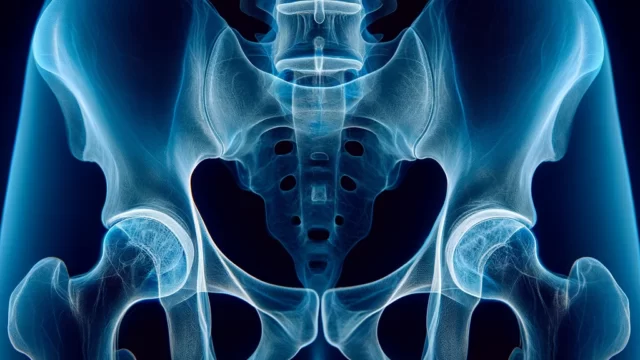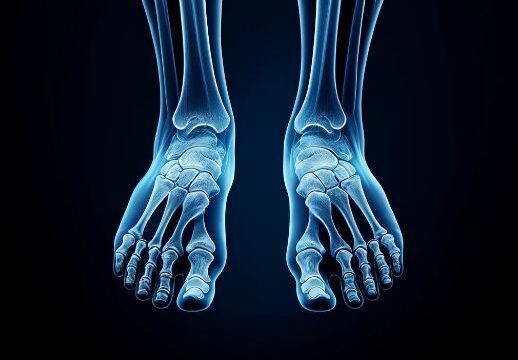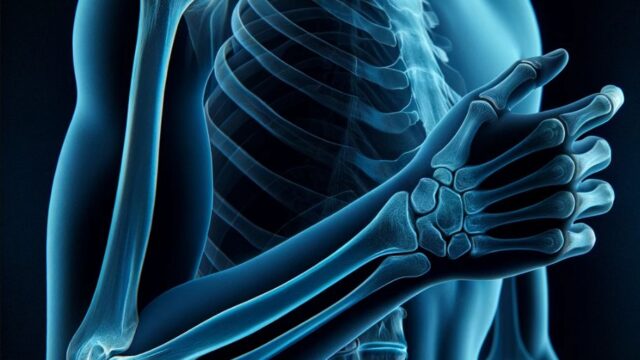AP oblique
PA oblique ( This method can reduce thyroid doses. )
AP oblique
Purpose
Observation of the pedicle of vertebral arch and intervertebral foramen on the side away from the cassette.
Both oblique views (LPO, RPO) are taken for comparison.
Prior confirmation
Remove any obstacles.
Positioning
Standing or seated with the back to the image receptor.
Oblique position with the affected side facing away from the image receptor.
The upper cervical vertebrae are oblique at 45° and the lower cervical vertebrae at 60°, so the angle should be between 45° and 60°. Alternatively, a 60° oblique position may be used, and then the angle may be reduced so that only the head is at a 45° angle.
Check from the front to see if the neck is bent and/or rotated. The sagittal plane of the head can be made parallel to the cassette to eliminate the overlap between the mandible and the cervical spine, but this causes twisting of the upper cervical spine.
Align the height of the cassette so that the 4th cervical vertebra (laryngeal ridge) is centered. The shadow of a finger placed at the level of the laryngeal ridge should be centered vertically on the image receiving surface.
The cross line (vertical) of the irradiation field passes through the mandible angle (gonion) of the side away from the cassette.
Raise the jaw and keep the dentition parallel to the ground. If raised too high, the occipital bone and C1 posterior arch will overlap. There are two ways to take the natural position without raising the mandible to eliminate the misalignment and the method of thrusting the face forward.
Ensure that the film (upper margin) includes the external ear foramen. Place a finger over the patient’s ear and look at the shadow of the finger projected on the cassette.
CR, distance, field size
CR : Vertical incidence at 15°-20° toward the 4th cervical vertebra (laryngeal ridge) in the direction of the cranio-caudal.
Distance : 100-150 cm.
Field size : The upper and lower fields should be centered on the laryngeal ridge and extended until the external auditory meatus is included. The left and right fields should be extended to the skin surface.
Since the patient often moves, observe the patient carefully and press the exposure switch when the patient is not moving.
Exposure condition
74kV / 16mAs
Gird ( + ) grid foils should be vertical direction.
Suspend respiration.
Image, check-point
Normal (Radiopaedia)
C1-Th1 should be observable.
The occipital bone should not overlap with the C1 posterior arch.
The mandible should not overlap the cervical vertebrae.
The intervertebral cavity or intervertebral foramen (5 foramina from C2-3 to C6-C7) should be widely observable and uniform in spacing and size.
If the zygapophyseal joint are visible, they are too angled.
If the vertebral arch roots and intervertebral foramen are not visible, the angle is insufficient.
Videos
Related materials
Anatomy
Note that the cassette is not centered on the fourth cervical vertebra in the same position as it was after AP view, because the patient is closer to the cassette than in AP view. In cervical spine imaging, it is necessary to change the height of the tube sphere in AP, oblique, and lateral imaging in order to center the 4th cervical vertebra.
PA oblique
Purpose
Observation of the pedicle and intervertebral foramen on the side near the cassette.
Prior confirmation
Remove any obstacles.
Positioning
Standing or seated with the back to the image receptor.
Oblique position with the affected side facing away from the image receptor.
The upper cervical vertebrae are oblique at 45° and the lower cervical vertebrae at 60°, so the angle should be between 45° and 60°. Alternatively, a 60° oblique position may be used, and then the angle may be reduced so that only the head is at a 45° angle.
Check from the front to see if the neck is bent and/or rotated. The sagittal plane of the head can be made parallel to the cassette to eliminate the overlap between the mandible and the cervical spine, but this causes twisting of the upper cervical spine.
Align the height of the cassette so that the 4th cervical vertebra (laryngeal ridge) is centered. The shadow of a finger placed at the level of the laryngeal ridge should be centered vertically on the image receiving surface.
The cross line (vertical) of the irradiation field is two transverse finger widths away from the cervical spinous process.
Raise the jaw and keep the dentition parallel to the ground. If raised too high, the occipital bone and C1 posterior arch will overlap. There are two ways to take the natural position without raising the mandible to eliminate the misalignment and the method of thrusting the face forward.
Ensure that the film (upper margin) includes the external ear foramen. Place a finger over the patient’s ear and look at the shadow of the finger projected on the cassette.
CR, distance, field size
CR : Vertical incidence at 15°-20° toward the 4th cervical vertebra (laryngeal ridge) in the direction of the cephalocaudal.
Distance : 100-150 cm.
Field size : The upper and lower fields should be centered on the laryngeal ridge and extended until the external auditory meatus is included. The left and right fields should be extended to the skin surface.
Since the patient often moves, observe the patient carefully and press the exposure switch when the patient is not moving.
Exposure condition
74kV / 16mAs
Gird ( + ) grid foils should be vertical direction.
Suspend respiration.
Image, check-point
Normal (Radiopaedia)
Clay-shoveler fracture (Radiopaedia)
C1-Th1 should be observable.
The occipital bone should not overlap with the C1 posterior arch.
The mandible should not overlap the cervical vertebrae.
The intervertebral cavity or intervertebral foramen (5 foramina from C2-3 to C6-C7) should be widely observable and uniform in spacing and size.
If the zygapophyseal joint are visible, they are too angled.
If the vertebral arch roots and intervertebral foramen are not visible, the angle is insufficient.
Videos
Related materials
Anatomy


















